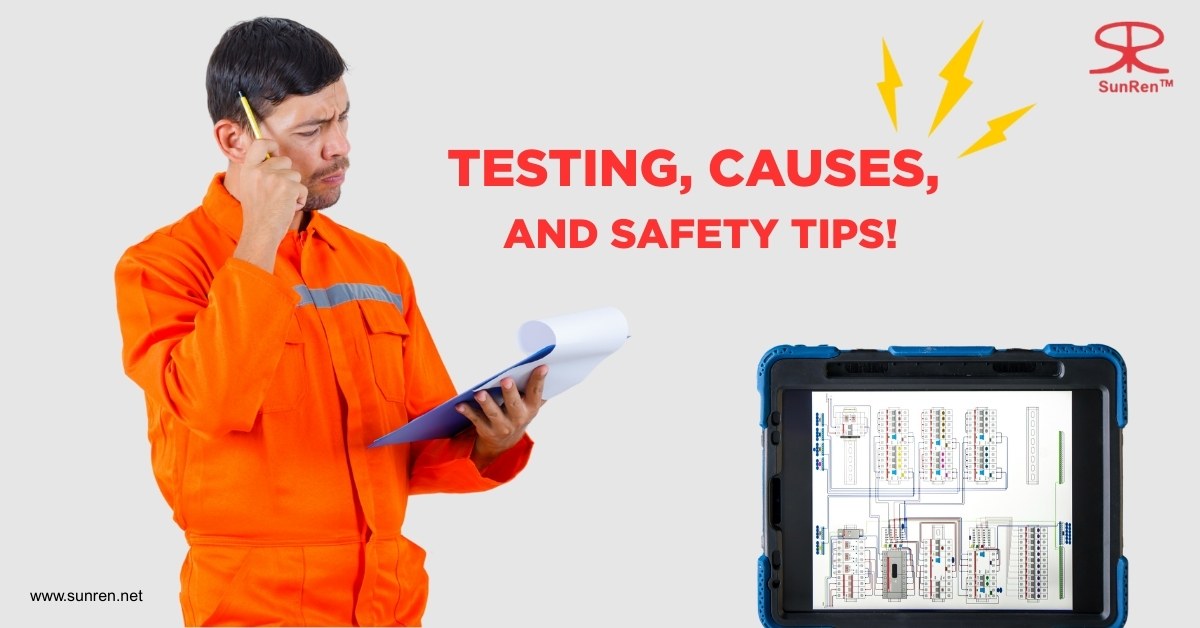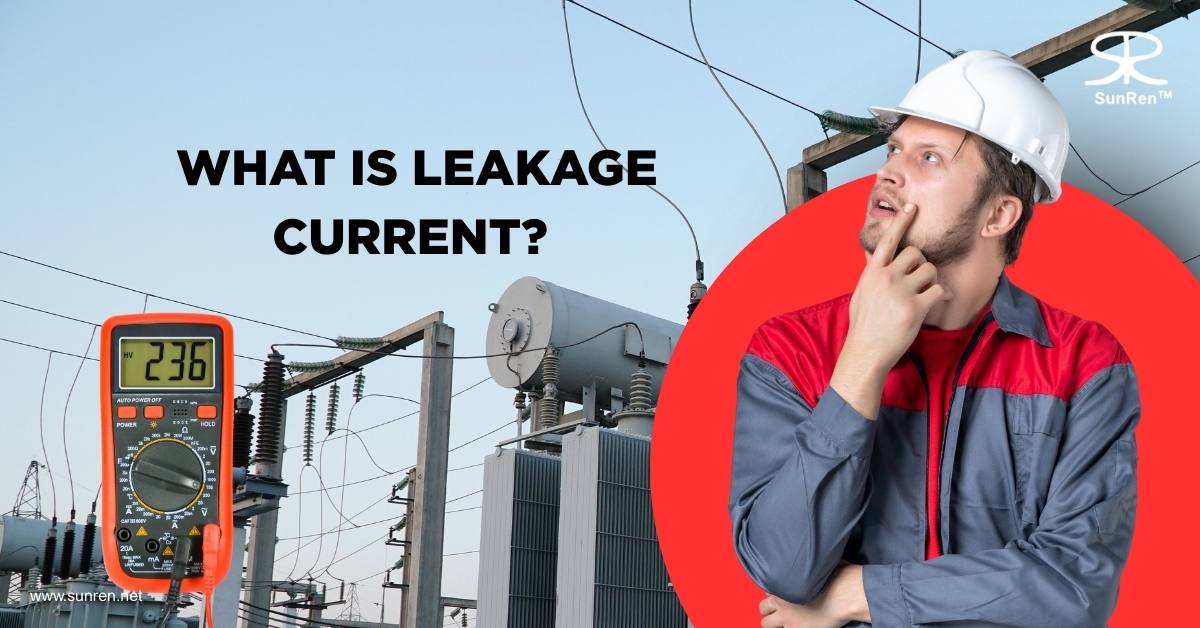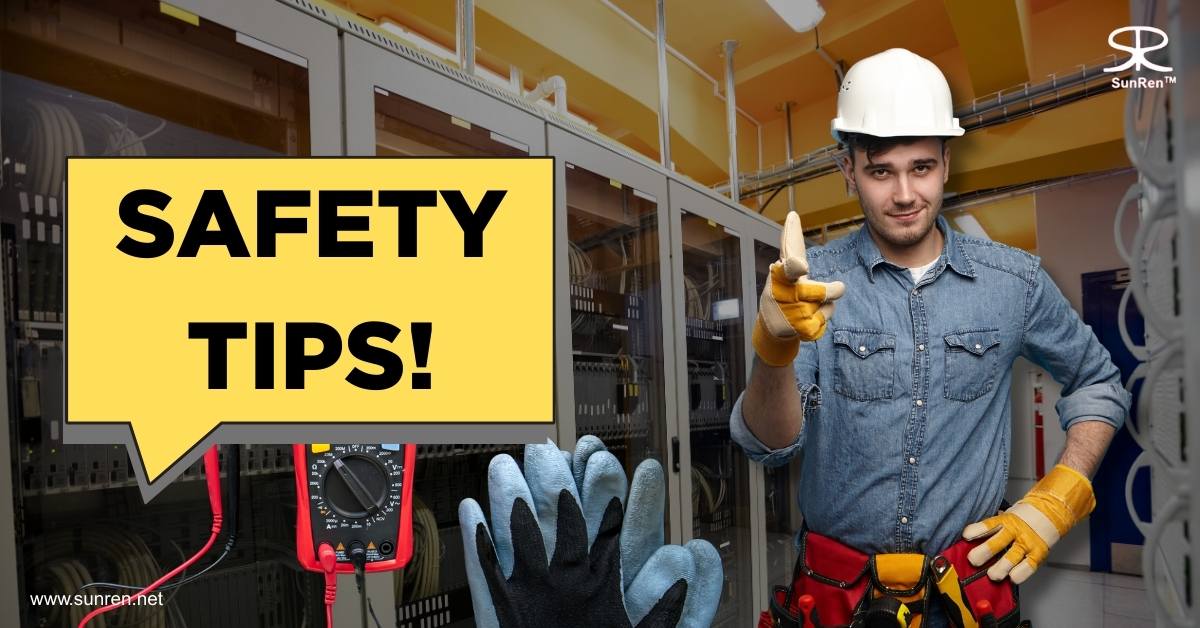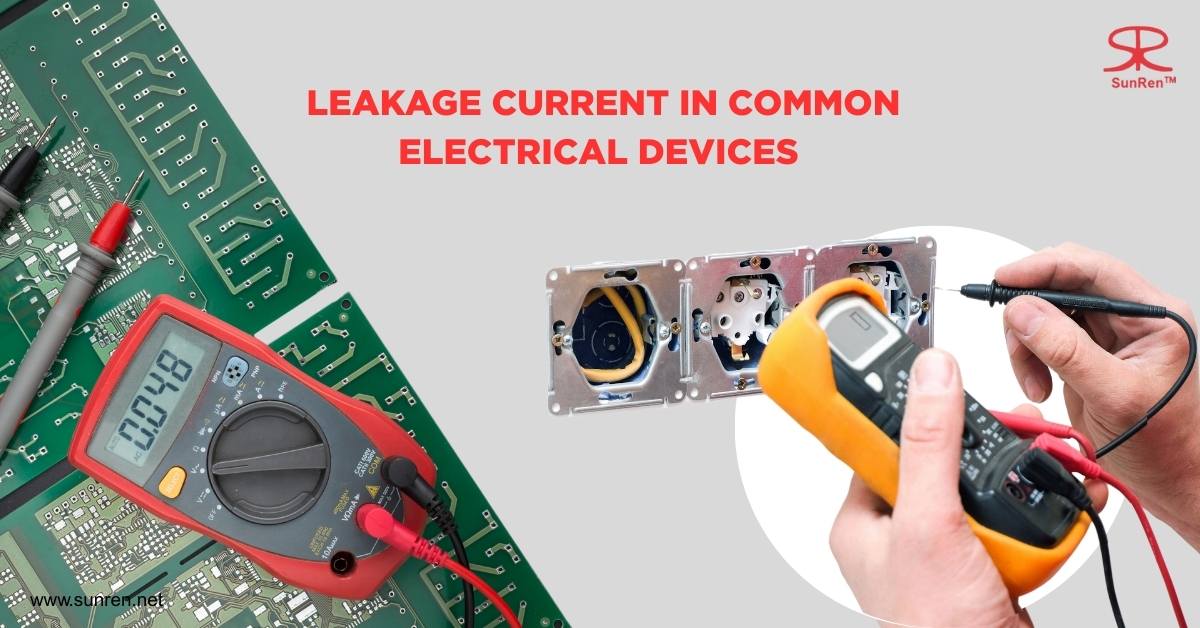All electrical and electronic systems must evaluate leakage current as a significant parameter. The unwanted current that passes through insulating materials emerges because of material flaws, water absorption, and unused capacitance effects.
High leakage current levels result in electrical safety risks, together with equipment breakdowns, while wasting energy.

Various industries need leakage current testing because it offers essential electrical safety control alongside regulatory conformity assessment.
The following article explains leakage current components while examining its generating factors and assessment procedures alongside protective procedures for electrical risks.
What is Leakage Current?

Electrical energy flowing unintentionally from an electrical circuit to other structures or ground due to insulation failure and stray capacitance forms the basis of the leakage current definition.
Such current exists in circuits whether the system is on or off and leads to energy wastage along with potential safety concerns.
Types of Leakage Current
- Earth Leakage Current – An insulation failure can result in an unintended current that flows to the ground, thus generating an earth leakage current that leads to electric shock potential.
- Capacitive Leakage Current – Capacitive Leakage Current presents itself in AC circuits by traveling through random capacitances that exist in the insulation area.
- Leakage Current in Semiconductors – Semiconductor devices containing diodes and transistors demonstrate a tiny leakage current that stems from their reverse-bias junction.
Causes of Leakage Current

The following aspects lead to leakage currents in electrical and electronic systems:
- Insulation Deterioration – High temperatures or moisture combined with the natural aging process of insulation lead to its deterioration over time.
- Stray Capacitance – Small capacitive couplings between different conductors enable leakage current to pass through even when insulation remains intact.
- Component Defects – Defective electrical components, along with poor manufacturing quality or damage, contribute to leakage current occurrence.
- Environmental Conditions – High humidity levels as well as dust or contaminants in the environment, decrease insulation resistance, resulting in higher leakage currents.
- Incorrect Wiring – When wiring is incorrect, it can create leakages because of poor grounding procedures and defective system installations.
Leakage Current Testing Methods

The testing of leakage current plays a vital role in safeguarding electrical safety and meeting standard requirements, and stopping electrical system failures. Testing occurs in different ways according to the application sector and its industry requirements.
1. Direct Measurement Using a Leakage Current Tester
A leakage current tester serves to detect leakage current by making direct connections to measuring circuits under analysis. This testing device reports accurate readings of current leakage through microamps or milliamps.
2. Using a Leakage Current Clamp Meter
The Leakage Current Clamp Meter provides live circuit inspection without interrupting the power supply.
The leakage current clamp meter functions to detect tiny leakage currents in active circuits by not disrupting the power supply. Electrical installations gain the best results from using this device to identify insulation faults.
3. Insulation Resistance Testing
The method uses a high DC voltage for measuring electrical equipment insulation resistance. Good insulation leads to high resistance measurements, while low resistance indicates leakage potential.
4. Earth Leakage Current Measurement
The examination of earth leakage current requires either a clamp meter or a residual current device (RCD). The conducted tests ensure leakage current stays within safe limits to avoid hazardous shocks.
5. Measuring Leakage Current in Capacitors
The measurement of leakage current in capacitors happens by applying voltage while checking the current flow. The testing method helps check both capacitor’s operational status and performance capability.
6. Semiconductor Leakage Current Measurement
The measurement of leakage current depends on reverse bias conditions for PN junction diodes and transistors using special testing devices.
Permissible Leakage Current in Electrical Installations
Safety standards establish maximum leakage current limits that regulatory bodies authorize. Wiring systems in domestic areas are allowed to leak only a few milliamperes (mA) of current. Some common standards include:
- IEC 60950-1 (for IT equipment): < 3.5mA
- IEC 60335-1 (for household appliances): < 0.75mA
- Medical Equipment Standard (IEC 60601-1): < 500µA (for patient-connected devices)
Safety Tips to Reduce Leakage Current

Safety, along with energy efficiency, depends heavily on maintaining low leakage current. Follow these safety tips:
- Use High-Quality Insulation – High-quality insulation should meet safety standards to ensure current leakage remains prevented.
- Regular Testing and Maintenance – Regular leakage current testing alongside regular maintenance allows the identification of insulation faults before they develop into system problems.
- Proper Grounding – The installation of proper grounding for electrical systems should be done correctly to stop leakage currents from following unintended pathways.
- Install Residual Current Devices (RCDs) – The installation of Residual Current Devices (RCDs) functions to automatically cut off power during detection of excessive leakage current.
- Keep Equipment Dry and Clean – The condition of equipment deteriorates when insulation gets damaged by moisture or dust because leakage current rises.
- Monitor Aging Components – The replacement of aging components should be conducted immediately after checking for damage, which may lead to electrical leakage.
- Check for Wiring Errors – Inspect electrical installations for incorrect wiring since it can create unwanted current pathways.
Leakage Current in Common Electrical Devices

Leakage Current in Batteries
The shutdown of engine power in battery-operated devices leads to a standard battery current leakage through which energy drains slowly from the battery.
Leakage Voltage
Equipment operations can be checked to stay within safe limits through voltage probe detection of leakage voltage caused by leakage current.
Electrical Leakage in Household Appliances
Home appliances sometimes leak electrical current, and owners should use leakage current testers to detect this condition before potential shock hazards.
Frequently Asked Questions (FAQ)
What is leakage current?
Leakage current refers to a small, unintended flow of electrical current from the power source to the ground or other unintended paths, even when the circuit is switched off.
What is a leakage current test?
A leakage current test is a safety assessment performed on transformers, particularly in medical applications, where strict safety standards require it.
How do I know if I have a leakage current?
To identify leakage current, review the firmware’s pin settings, including direction and the configuration of pull-up or pull-down resistors.
How to test for electricity leakage?
To test for electricity leakage, follow these methods:
- Multimeter Test
- Clamp Meter Test
- Earth Leakage Circuit Breaker (ELCB) Test
- Insulation Resistance Test
How is leakage current calculated?
The leakage current is calculated by I = V/R.
Conclusion
The fundamental component of electrical safety while maintaining energy efficiency is the leakage current. The methods to measure leakage current, together with its causes and safety protocols, assist in stopping electrical equipment mishaps and hazards.
The compliance of electrical installations to industry standards becomes achievable through leakage current testing operations, which help create safe operating environments.
Proper preventive measures that involve regular testing with insulation maintenance and proper grounding enable sufficient management of leakage current problems to maintain both safety and electrical system efficiency.



